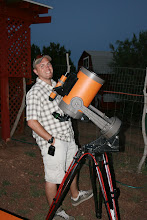It takes a lot of searching to dig out who your childhood hero might be. After family and friends there seems to be a bit of a void before you can rest your finger on an individual. Everyone has their own hero that is specific to their own individual character traits, beliefs and faith. Very few stand out as much as Neil Armstrong a hero for humankind. This man was the first to walk on the Moon. Unlike war heroes, firefighters and police officers who are heroes in their own category; Neil and many others put their lives in peril to not save someone or something but for the advancement of knowledge for the entire Human race. This puts Neil on a different pedestal than most heroes. In the thick of the Cold War with Communism we as a nation were driven to beat the Soviets to the Moon and when Neil finally stepped out as the first American on the Moon he did not say, "That is one small step for man and one giant leap for the United States." He said, "one giant leap for Mankind," a word that has no political, religious or discriminative quality to it. It is sad to realize that even the all encompassing implication of that one word takes a few seconds to fully understand. It's true we live in a divided world, but in those three days Neil had on his way to the Moon looking back at a place that appeared as one beautiful, undivided blue marble, you too would probably feel small and fragile and as a part of not just a nation but a small point in a cold and empty place. Mankind would have a heavy weight in a weightless place like space.
Children saw these Astronauts as heroic explorers that didn't use wealth or weaponry to accomplish their tasks but instead they used education, science, math and persistence. Never before of for decades later would the country again be strong with students majoring in Science, Math and Engineering.
Neil Armstrong and the other Astronauts knew then where Humans were destined to be; in the ever expanding cosmos. As a Nation with one big ambitious goal we inspired and nurtured Education and we needed that then and we need it now. Neil Armstrong would have never accepted Hero status for what he did and he would probably disapprove with how amazing I painted him in this blog. I'm sure that he was very aware however that he was in fact a role model; inspiring this young lad 23 years ago to want to see more of this Universe. Although my path did not lead me in the great footsteps of Neil himself I was very inspired to make it my life's work to encourage other young kids to enjoy science and possibly just maybe give rise to another great Astronaut. Rest in Peace Neil Armstrong.







